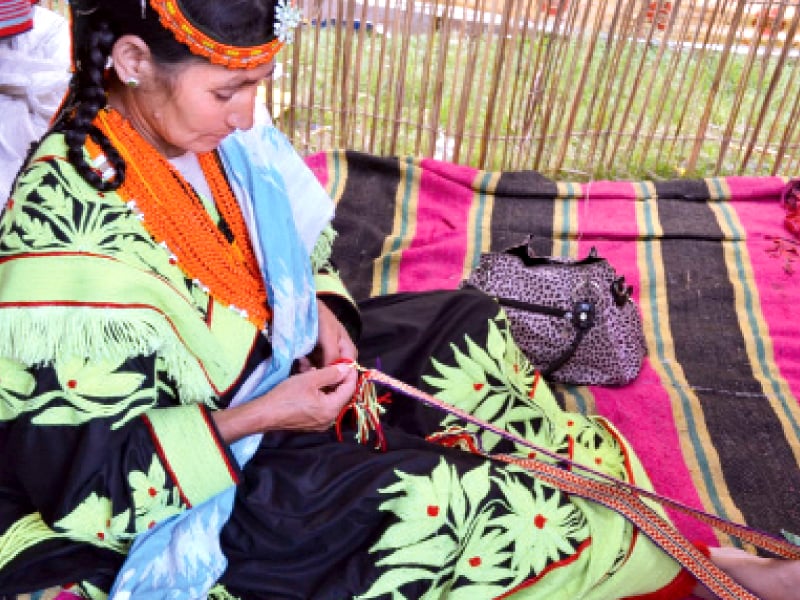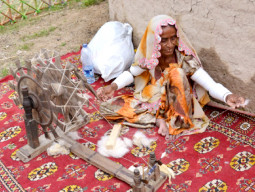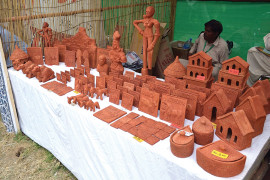
The colourful ambience, folk dances and tunes, along with the diverse traditional crafts on display at the pavilions set up at the Lok Mela continued to attract a huge crowd on the third day.
The Khyber-Pakhtunkhwa pavilion has a charm of its own, with a recreated “Bab-i-Khyber” entrance ushering in the visitors in all its grandeur. The pavilion boasts 25 master craftsmen and craftswomen from across the province.
It was refreshing to note that most of the stalls have been assigned to women artisans, including Saira Parveen and Tasleem Bibi mastering in Hazara Phulkari; Khadija Sardar who crafts Chitral and Kalash costumes; Nasreen Nisar mastering in Kohistani tanka; Rameem Naz excelling in weaving; and Hanfa Shah, whose expertise is Hazara Jasti work.
The most prominent among them was Saira Perveen. Excelling in Phulkari, a famous form of embroidery from the Hazara region, she weaves intricate flower patterns with coloured silk threads on hand-woven coarse cotton cloth. Learning the craft under her mother’s tutelage from a formative age, she upheld the tradition which had been her family’s occupation. Parveen has trained a number of female students at Havelian in this art, and has also won accolades at various festivals and exhibitions.
Some of the accomplished artisans at the festival included Waseem and Samiullah practicing lacquer art; Taj Muhammad (Swat wood-carving); Shams Zaman (shawl weaving); Riaz Ahmed (wax printing); Sultanat Khan (wood carving/calligraphy); Kashif and M. Asif (crfating Charsada chappals); Sultan Muhammad (weaving Swati shawls); Shah Behram (Taghars floor rug); Aurangzeb (stone carving) and Khawaja Safar Ali (metal work).
Hailing from Peshawar, Khawaja Safar Ali, 70, is a master of metal work.
Once common in his native area, indigenous metal work is gradually dying out now, partly, due to the high cost of raw material, and also due to an onslaught of imported metal ware in local markets.
Not dissuaded by the change in demand, Ali still displays his labour of love at his workshop in Misgaran Bazaar. His work includes decorative plates, vases, bowls, samovars (metal water boiling utensil of Central Asian origin) and similar articles, replicating finely detailed designs reminiscent of the glorious Mughal era.
A trip to the K-P pavilion would have been incomplete without treating oneself to the famed delicacy chappal kabab, prepared fresh. Also on offer at the pavilion were patta seekh and lamb karahi, ready to be guzzled down and washed off with a cup of qehwa (green tea), infused with a hint of cardamom, brewed in a samovar at “Nemat Khan Qehwa Khana”. Pleasant folk Pushtoon tunes such as “Tunk Takor” wafted out of a nearby hujra, which hosted musicians accompanying traditional musical instruments including the rabab, tabla and harmonium.
Published in The Express Tribune, April 15th, 2014.






















































COMMENTS
Comments are moderated and generally will be posted if they are on-topic and not abusive.
For more information, please see our Comments FAQ